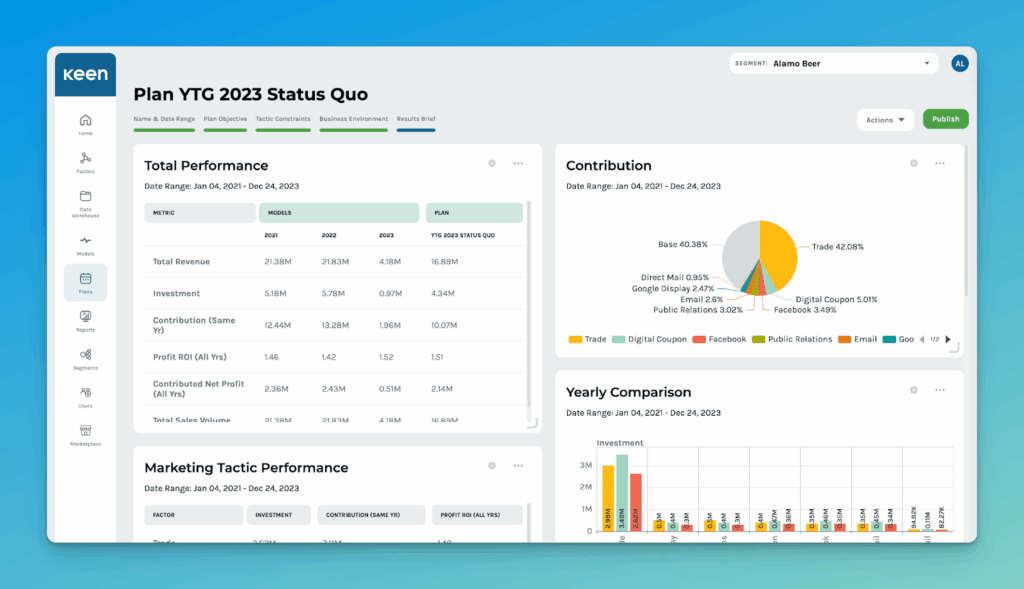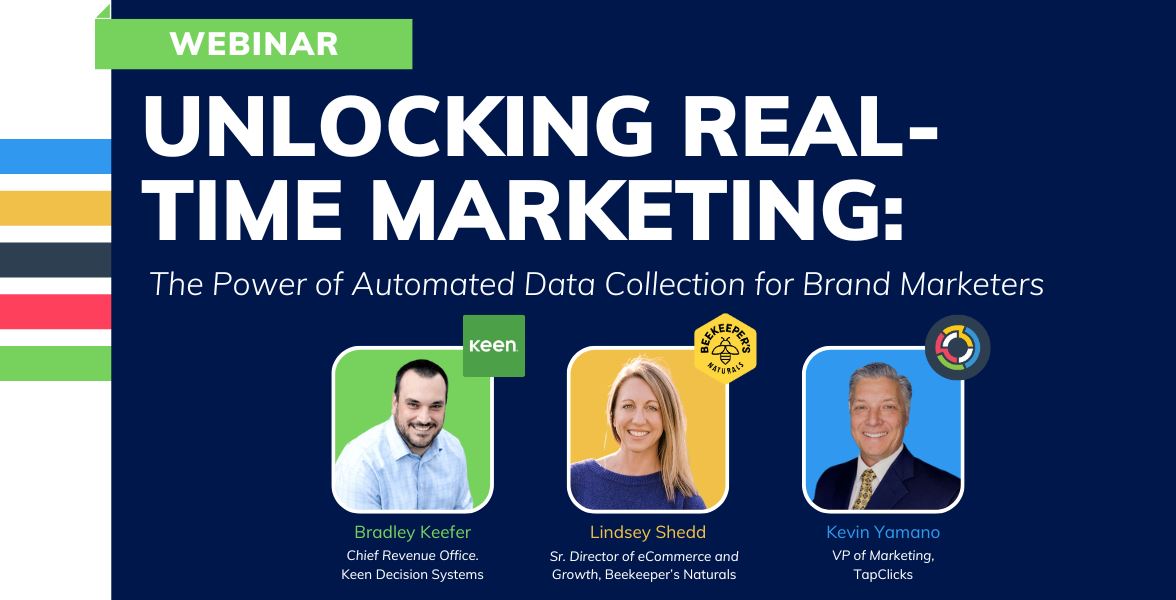Open-source marketing mix modeling (MMM) platforms promise free and sophisticated analytics. And on the surface, they sound like the perfect alternative to vendor MMM platforms, too.
But before you dive into the world of open-source marketing automation software, you need to know what you’re signing up for.
Key insights:
- There are hidden costs in “free” open-source marketing mix modeling (MMM). These solutions demand serious resources like engineering talent and infrastructure. Plus, the implementation can take years to be fully effective.
- Open-source MMM software from companies like Google and Facebook comes with inherent biases, as their core business relies on ad revenue, making true transparency questionable.
- Open-source tools aren’t necessarily enterprise-ready. Implementing a robust MMM solution in-house demands extensive expertise, high costs, and strong change management.
The rise of open-source marketing mix modeling software
Companies are turning to open-source MMM because they want control. People are tired of black-box solutions and biased reporting. They want transparency, flexibility, and a way to build models that actually fit their business.
Platforms like Google’s Meridian and Facebook’s Robyn let you control your analytics without costly third-party MMM vendors. Their flexibility allows you to:
- Customize models to fit specific needs
- Test different methodologies
- Integrate MMM into existing analytics stacks
It’s easy to see the appeal. But before you commit, you need to understand what it really takes to make these tools work.
Download our marketing mix modeling (MMM) playbook to keep learning.
The hidden costs of free open-source marketing analytics solutions
If you’re considering open-source solutions, it’s best to go in with your eyes open, too. Open source doesn’t always mean completely open or transparent. Here’s what “free” really costs you:
- Engineering and data science resources: Open-source automation tools require a team of experts to configure, validate, and maintain models. Even if the source code is accessible, finding what you need and understanding how it all works often requires significant time and resources.
- Infrastructure investment: You need to build aggregated data pipelines, cloud storage, and automation layers to make these models work at scale.
- Time-to-value delays: Most open-source MMM implementations take 12-24 months to become usable—assuming everything goes smoothly.
But the biggest hidden cost? Trust.
Keep learning: Understand marketing mix modeling with machine learning
Can you really trust an open-source marketing automation model from an ad-driven company?
When you adopt marketing technology from companies whose core business is advertising, you must scrutinize their incentives.
Google and Facebook are unlikely to release anything that could potentially cannibalize their cash cow—ad revenue. Just as their marketing attribution models have historically favored their own advertising products. Trusting the fox to guard the henhouse is a risky proposition.
Keep learning: Thriving amid the rise of retail media networks
Why open-source marketing automation software and MMM aren’t enterprise-ready
Over the years, we’ve seen companies of all sizes attempt to bring marketing strategy software in-house, and the open-source automation wave is no different. While open source can give you a head start, shaving off development time, it still comes with the same fundamental challenges.
Implementing enterprise-grade solutions requires far more than just the core modeling code. At Keen, we spent nearly two years building the latest version of our platform without touching the core modeling code.
Even with the core modeling code, you’ll need to:
- Invest heavily in a team of engineers and data scientists to build out the necessary infrastructure, user-friendly interfaces, and reporting capabilities. This undertaking can easily cost millions and take years, always exceeding the price of licensing an established vendor solution like Keen.
- Overcome internal inertia and resistance to change, which can be an uphill battle, especially when jobs and budgets are on the line. The larger your organization, the more stakeholders and red tape you’ll have to navigate. Without deep expertise in change management and the political capital to drive adoption, even the most technically impressive homegrown MMM solution may never see the light of day.
Keep learning: Why marketing mix modeling is trending
In-house MMM vs. trusted partners: What’s the smarter choice?
If you have the resources, an in-house team definitely has the benefits of speed, accessibility, and efficiency—once you build it. However, deep expertise from a trusted partner can take a lot off your plate, get you up to speed quickly and free your team up for other tasks. Let’s walk through both options.
1. Data limitations
When you build MMM in-house, either from scratch or on top of an open-source foundation, you’re essentially operating in a silo. Your learnings are limited to your own organization’s data and experience.
Contrast that with working with an external partner like Keen, who can draw upon over a decade of experience across brands and industries. This collective experience is invaluable in navigating the MMM implementation challenges.
From data wrangling to model validation to stakeholder communication, there’s no substitute for the battle-tested best practices developed over thousands of engagements.
Keen’s software is purpose-built to address the most common pain points, allowing you to leapfrog the learning curve.
Keep learning: The evolution of data-driven marketing
2. Speed barriers
Building an in-house MMM solution from the ground up is a multi-year endeavor. Even if you have the rare combination of brilliant data scientists, engineers, and product managers to pull it off, you’re looking at years before you have a fully functional platform.
In a day, you can be up and running with Keen’s solution and already optimizing your marketing spend.
3. Insight quality
A decision maker needs more than analytics, they need a plan of action. We’ve seen countless AI marketing tools and companies become fixated on the model results (their ROIs from last year); however, your ROI from last year does not reveal your future opportunities.
Your ROI only reveals what the return would be if you did exactly the same thing. It does not show you the optimal or how returns scale across all opportunities. This is the insight you need to make decisions.
To demonstrate your true marketing ROI, you need to answer: “Given my past, what’s the optimal investment in the future?”
This is where Keen’s platform truly shines. It empowers marketers to proactively design and pressure test investment strategies at any level of granularity, from individual tactics to brand portfolio budget allocation. Consider these scenarios:
Curious to see how your plan would need to adapt to changes in pricing, distribution, or market conditions? Keen enables you to effortlessly model multiple what-if scenarios.
Want to optimize your digital campaign spend week-by-week while accounting for seasonality and diminishing returns? Keen can do that.
Need to evaluate different marketing budget allocation scenarios across your brand portfolio and sales channels? Keen has you covered.

While open-source solutions like Robyn and Meridian provide a solid foundation for building marketing mix models, they fall short when it comes to enabling dynamic, granular planning and marketing mix strategy optimization.
Keen puts the power directly in the hands of the decision-maker. With open-source solutions, there is often a disconnect between the data scientists building the models and the marketers and executives who need to act on the insights. This can lead to delays, misinterpretations, and lost opportunities.
Here’s a quick overview of the differences between the two:
| Marketing mix modeling challenge | Building MMM in-house | Working with a proven MMM platform (Keen) |
| Data access and integration | Limited to your own organization’s data and experience, requiring extensive data wrangling. | Leverages over a decade of cross-industry data and best practices, streamlining integration. |
| Speed to insights | Takes years to build a fully functional MMM platform. | Up and running in a day, optimizing marketing spend immediately. |
| Expertise | Requires a team of data scientists, engineers, and analysts to develop and refine models. | Built by experts with thousands of engagements, ensuring accurate, actionable insights. |
| Stakeholder adoption | Marketers and executives may struggle to interpret and act on insights without technical expertise. | Designed for decision-makers, providing clear, actionable recommendations without technical barriers. |
| Model maintenance | Ongoing updates, validation, and refinements fall entirely on your team. | Continuous improvements and real-time scenario-based marketing planning without the maintenance burden. |
| Cost | High upfront investment in talent, infrastructure, and ongoing maintenance. | Lower total cost with a faster time to value and built-in optimization tools. |
Read more: Eight reasons to trust the Keen platform
How to evaluate if open-source marketing automation is right for you
Before choosing an open-source solution, consider these key factors:
- Technical resources: Do you have engineers or data scientists to handle implementation and maintenance?
- Time commitment: Can you invest 12–24 months in refining and optimizing the system?
- Internal buy-in: Is your team aligned and willing to adopt and integrate the solution?
- Customization needs: Do you require a highly tailored system that off-the-shelf solutions can’t provide?
- Ongoing maintenance: Can you support long-term updates and troubleshooting without vendor assistance?
If these align with your capabilities, open-source marketing automation software may be a cost-effective and flexible choice for you.
Unlock instant MMM value with Keen’s marketing mix solutions
For organizations spending upwards of $20-30 million annually on marketing activities, investing a few million to build an in-house MMM capability on top of open-source marketing automation software may pencil out. But for the vast majority of marketers, partnering with Keen is the most effective way to get the insights you need to drive growth.
Our platform combines the best of cutting-edge data science with an intuitive user experience and hands-on strategic guidance to help you make smarter decisions faster. So before you embark on an open-source MMM adventure, consider the opportunity cost. With Keen, you can realize value in a matter of days, not years.
The choice is yours, but choose wisely. In the race to optimize marketing performance, time is not on your side.
Want to see the advantages of Keen over open-source marketing mix modeling for yourself? Start your 14-day free trial today!
Frequently Asked Questions
What is open-source marketing mix modeling (MMM)?
Open-source marketing mix modeling (MMM) is the publicly available code to build and modify marketing measurement tools—for free. You can customize the free models to fit your business needs and access the model code itself to understand how the MMM works.
Is an open-source marketing mix modeling tools like Robyn and Meridian truly free?
No. The code of open-source marketing mix modeling (MMM) tools may be free to access, but making it work isn’t. Building a functional open-source MMM solution takes serious time, engineering resources, and infrastructure. Most companies spend 12–24 months setting it up before they see any real value.
Can open-source marketing analytics tools replace commercial platforms like Keen?
No. Not if speed, usability, and insight quality matter to you. Google’s open-source MMM or Facebook’s Robyn are powerful starting points, but they’re not built for fast, business-friendly decision-making. They often require a team of data scientists to run the models and interpret the results.
Platforms like Keen are purpose-built for brands. Marketers like you get clear answers in minutes, without waiting on technical teams.
How long does it take to implement an open-source MMM?
Implementation of an open-source MMM takes 12 to 24 months, depending on business complexity, customer data availability, and team expertise. The process includes:
- Setting up data pipelines
- Validating models
- Building infrastructure
This often requires significant engineering and data science resources.
When does open-source MMM make sense?
An open-source marketing mix model makes the most sense for companies with strong data science and engineering teams that want (or need) full control over their analytics and the flexibility to customize models to their unique business needs. It’s particularly useful for organizations with long-term investment capacity, allowing them to refine and optimize their MMM approach over time.





